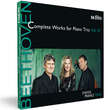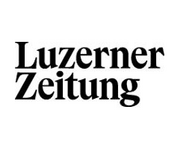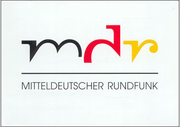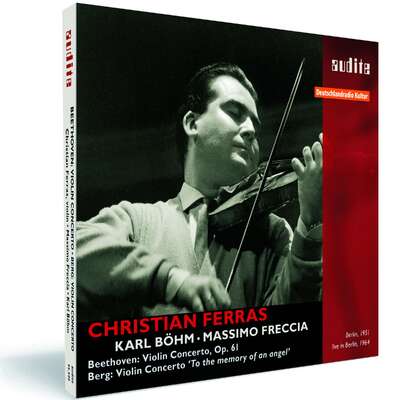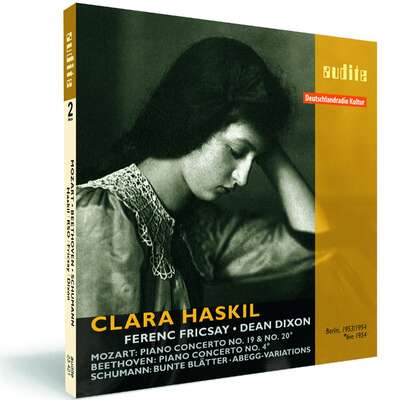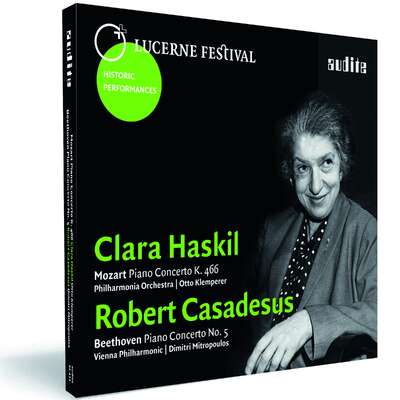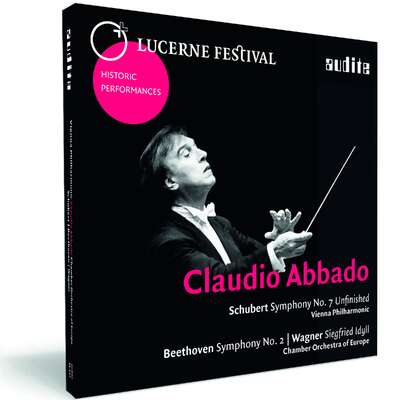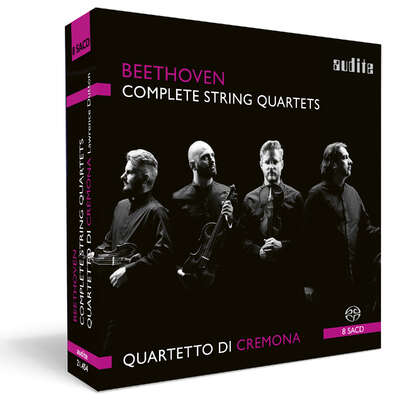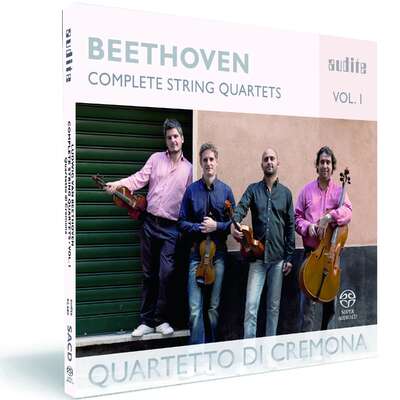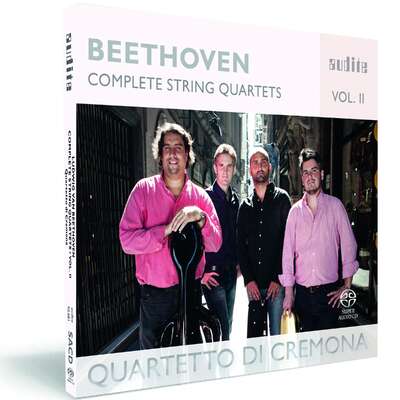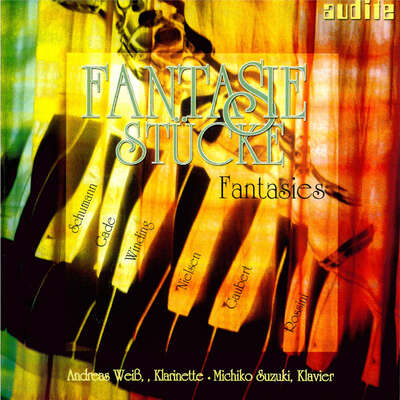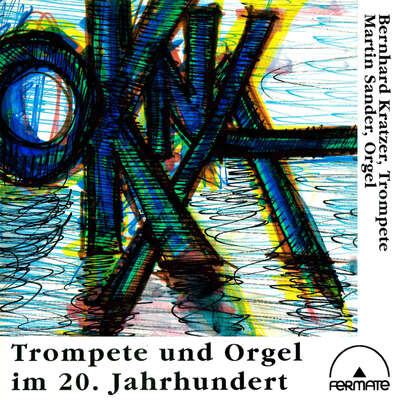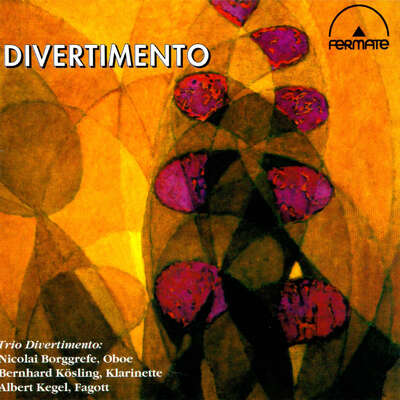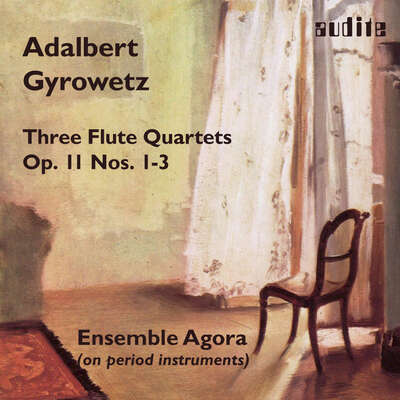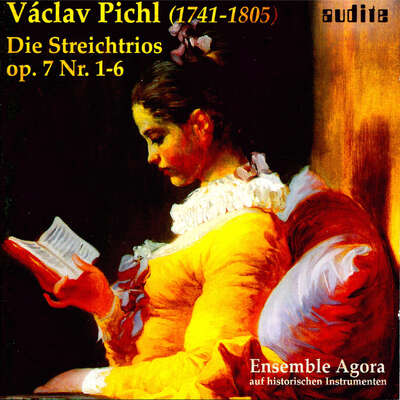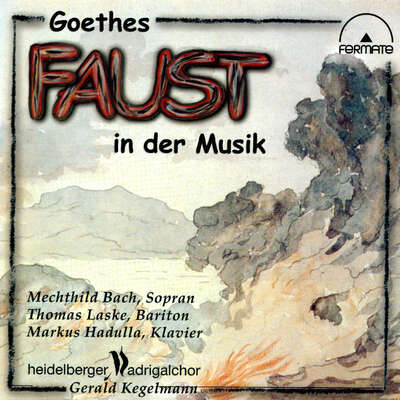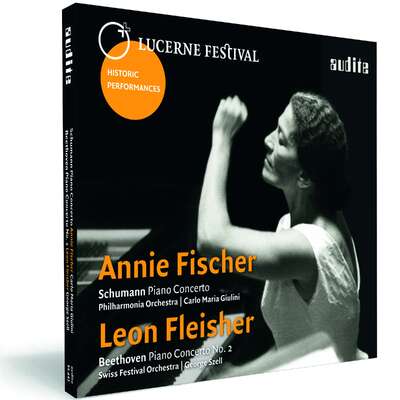
With the Piano Trio in E-flat major, Op. 38 (adapted from the Septet, Op. 20) and “Gassenhauer” Trio, Op. 11, the fourth installment of Beethoven’s complete piano trios includes two splendid works in which the violin parts can also be played by the clarinet. The recording also features the Trio Movement in E-flat major, Beethoven’s earliest attempt in the genre.more
"This collection of Beethoven’s works for violin, cello and piano [...] is played by the Swiss Piano Trio with real freshness and verve." (The Guardian)
Details
| Ludwig van Beethoven: Complete Works for Piano Trio - Vol. 4 | |
| article number: | 97.695 |
|---|---|
| EAN barcode: | 4022143976956 |
| price group: | BCA |
| release date: | 1. September 2017 |
| total time: | 63 min. |
Bonus Material
- digibooklet
-
Report: Luzerner Zeitung_20180618
20th anniversary of the Swiss Piano Trio
Informationen
The fourth installment of the Swiss Piano Trio's recording of the complete piano trios includes two major works, not counted among his seven numbered trios, whose violin parts can also be played by the clarinet. The finale of the "Gassenhauer" Trio, which was composed in 1797, draws on a popular Singspiel melody by the composer Josef Weigl whose cheerful naivete is very well-suited to the character of the (B-flat) clarinet; the dimensions and ambitious scope of the work, however, make it a truly "classical" piano trio. Sometimes referred to as the "eighth" trio, the Piano Trio in E-flat major, Op. 38 for violin or clarinet, cello, and piano, which Beethoven published in 1807 under the title "Grand Trio," is an arrangement of the Septet, Op. 20 written in 1799-1800. Beethoven presented the Septet in April 1800, along with the First Symphony, at an Academy in Vienna, where it met with enthusiastic acclaim. Beethoven brilliantly solved the problem of scoring the piece for piano trio while preserving its sound character, without sacrificing the principle of "obligato accompaniment," the independence of each voice irrespective of its function. Finally, the Trio Movement in E-flat major dates back to the composer's younger years; he wrote the piece in 1790 for the members of the so-called Zehrgarten club, before later setting out for Vienna in 1792.
Reviews
Fanfare | Issue 41:5 (May/June 2018) | Jerry Dubins | May 1, 2018
This is Volume 4 in the Swiss Piano Trio’s survey of Beethoven’s works for piano trio—those originally composed as such and thoseMehr lesen
It might be helpful to make an accounting of where the Swiss Piano Trio stands in its survey in relation to the long-completed Trio Élégiaque’s set. First off, let’s address the matter of numbering. Not counting either the few pieces of juvenilia he wrote for violin, cello, and piano, or the later works he arranged for piano trio from pieces originally scored for different media, Beethoven composed six distinct piano trios. The first three, composed in 1795 and bearing the collective opus number 1, were Beethoven’s first officially published works. Logically, we refer to them as the Piano Trios Nos. 1, 2, and 3. Not so logically, the next two distinct piano trios are No. 5, “Ghost,” and No. 6, composed together as a pair in 1808 and published as opp. 70/1 and 70/2. Beethoven would write only one more distinct piano trio, and that would be No. 7, the “Archduke” in 1811, published as op. 97.
Right away, something doesn’t add up here. There are only six trios, but they’re numbered 1–3 and 5–7. Is there a number 4 and, if so, what happened to it? Well, there is and there isn’t. In 1797, Beethoven composed a trio, which he dedicated to the Countess Maria Wilhelmina von Thun, but that work was not scored for violin, cello, and piano. It was scored for clarinet (or violin), cello (or bassoon), and piano, and published the following year as op. 11. Beethoven originally conceived the work for clarinet, but because it could be played as a standard piano trio with violin, and it was the next trio work Beethoven wrote after the first three piano trios, by default it became No. 4. The Swiss Piano Trio gives us this trio in its violin version on the present album. The familiar “Gassenhauer” nickname derives from the variations theme in the finale, “Pria ch’io l’impegno” (Before I go to work) from the dramma giocoso, L’amor marinaro ossia Il corsaro by Joseph Weigl. It’s said that the tune was so popular people would sing or whistle it in Vienna’s alleyways and streets—Gassen in German.
The Trio in E♭ Major, op. 38, was too far removed from a standard piano trio in its original instrumentation to be numbered as one of them. It wasn’t a matter of simply exchanging one instrument for another of similar range. This transformation required significant surgery, for op. 38 is in fact a reduction and adaptation of Beethoven’s Septet, op. 20, originally scored for clarinet, horn, bassoon, violin, viola, cello, and double bass. There wasn’t even a piano part in the original; that had to be derived and fleshed out in idiomatic pianistic writing from the harmonic framework of the piece. Performed as a trio for violin, cello, and piano, as it is here and elsewhere, it’s actually one step removed from the original version of the arrangement, for Beethoven retained the clarinet as the lead soprano voice, doing away with the violin altogether and not indicating it as an alternate for the clarinet, as he did in the “Gassenhauer” Trio. The Septet enjoyed such popularity that Beethoven is said to have come to resent that it was held in higher esteem than some of his later works which he considered superior, which begs the question of why he decided to adapt it as a trio. No doubt the answer was money.
To confuse matters a bit, a piano trio by Beethoven in the same key and believed to have been composed in 1790 or 1791 was discovered among his manuscripts following his death. It was published posthumously in 1830, and was subsequently entered into his catalog as WoO 38. So, we have two piano trios, both in E♭ Major, one tagged op. 38—that’s this one, the Septet arrangement—the other tagged WoO 38. So far, the Swiss Piano Trio hasn’t gotten to any of the WoO numbers, and whether it will or not, I don’t know, though the inclusion of the Hess-numbered Allegretto in E♭ Major on this fourth volume would seem to suggest the affirmative.
Trio Élégiaque’s set, of course, includes not only the Hess item and the WoO numbers, but also the composer’s piano trio adaptations of his Symphony No. 2 and his String Quintet, op. 4, the latter arrangement having its own assigned opus number, 63. The trio version of the String Quintet, however, is actually twice removed from the original work, which was the Octet in E♭ Major, op. 103. The Octet’s high opus number reflects its posthumous publication date of 1837; its actual composition date is 1792–93.
Unless and until the Swiss Piano Trio matches the Trio Élégiaque for completeness, I will continue to promote the latter on that aspect of its survey. With respect to the performances, however, that preference is beginning to lessen just a bit, and that speaks to how superbly well the Swiss Piano Trio acquits itself in these works. The playing is of a glorious tonal purity and beauty, enhanced by Audite’s exquisite recording. Interpretively, the players exercise what strikes me as an intuitively perfect sense of timing in balancing the music’s humor against its moments of touching emotional expression. These are really outstanding performances.
At this point, I’d hate to have to choose between the Swiss Piano Trio and the Trio Élégiaque, and luckily, I don’t have to. You wouldn’t go wrong with either of them; however, two factors may sway you in one direction or another. The Trio Élégiaque’s five-disc set on Brilliant Classics is selling on ArkivMusic for $17.99, or approximately $3.60 per disc, while Audite’s releases, not yet available as a boxed set, continue to sell for a pricey $18.99 per disc. The other factor is that Audite’s recordings are available from the label’s website, audite.de, as downloads in HD format. The Trio Élégiaque’s recordings can also be downloaded from iTunes and Spotify, but not in HD format, as far as I can tell. Those considerations aside, basing my conclusions solely on the performances and the quality of the reviewed download, I have to accord this release my strongest recommendation.
Fono Forum | Februar 2018 | Marcus Stäbler | February 1, 2018
Bei seiner viel gelobten Beethoven-Einspielung ist das Swiss Piano Trio mittlerweile bei der Folge vier angelangt und bestätigt auch da das hoheMehr lesen
Das 1998 gegründete Ensemble integriert diese Details in einen organischen Fluss der Musik, der viele kleine Freiheiten im Tempo zulässt – wenn der Pianist Martin Lucas Staub etwa einen Aufgang im Klavier minimal verzögert und so eine Einladung an den Themeneinsatz der Geige ausspricht.
Der Klang des Trios ist fein differenziert; er kennt ganz unterschiedliche Lesarten des Staccato, von einer kecken über die schnippische bis zur bissigen Artikulation, und er könnte manchmal vielleicht noch etwas mehr schwelgen. Wie im Adagio aus dem Gassenhauer-Trio, in dem der langjährige Cellist Sebastien Singer das kantable Thema vielleicht schon eine Spur zu schlicht spielt. Seit Sommer 2016 übernimmt Sasha Neustroev den Cellopart beim schweizerischen Klaviertrio. Dass er sich nahtlos einfügt, demonstriert er im zweiten Hauptwerk der CD, der Bearbeitung des Septetts op. 20 für Klaviertrio, die Beethoven unter der Opuszahl 38 veröffentlicht hat. Auch da atmet das Ensemble gemeinsam, lässt die Melodien zusammen erblühen und führt die Phrasen immer auf ein Ziel hin, oft mit einer kaum merklichen Verbreiterung des Tempos. So klingt Kammermusik der Spitzenklasse.
American Record Guide | January / February 20218 | John Dutterer | January 1, 2018 | source: http://argsubson...
When it comes to Beethoven’s trios, there is no short age of recordings, so when a new one comes along it’s impossible not to ask what this oneMehr lesen
The energy level here is high, and though it seems trite to say it, these musicians apparently like performing together. Furthermore, they share their vision of Beethoven; in this instance, they are delving into the classical era incarnation of the man who would only later become the archetypal romantic composer. Much as I like the late quartets, I favor the early Beethoven.
The trio’s biggest asset is undoubtedly pianist Martin Lucas Smith, who sometimes calls to mind Glenn Gould, in that he is thinking as he is playing, sculpting his notes rather than getting carried away with the opportunity for bombast. Much like Gould, Smith softens or restrains his piano sound sometimes, so that it resembles a fortepiano; but unlike Gould, Smith does not overshadow his collaborators.
Sounding newly minted, Op. 11 is lovely here, as is the brief Allegretto (Hess 48). The real surprise for me was the septet. While I realize that it is the gold standard of its kind, I have never much admired Beethoven’s Septet, which always felt too long and uneventful. I had never heard his later adaptation of the piece for piano trio. Beethoven wasn’t one to waste his time, so even the fact that he made the transcription (and gave it an opus number) testifies to his regard for both the original composition and the resulting trio.
This is quite simply a masterclass in chamber music performance. Many ensembles omit this piece from their “Complete Trios” recordings, but I can’t imagine why. This isn’t a novelty or transcription by some aficionado 50 years later; this is a very special example of Beethoven’s genius for grasping all the possibilities of his music. Now I will have to go in search of the Swiss Piano Trio’s other Beethoven recordings ( J/A 2015, S/O 2016). They are likely just as essential as this one.
Luzerner Zeitung | Mittwoch, 27. Dezember 2017 | December 27, 2017 Beethoven in unbekannter Gestalt
Zusammen sind Angela Golubeva (Violine), Sasha Neustroev (Cello) und MartinMehr lesen
St. Galler Tagblatt | Mittwoch, 27. Dezember 2017 | December 27, 2017 Beethoven in unbekannter Gestalt
Zusammen sind Angela Golubeva (Violine), Sasha Neustroev (Cello) und MartinMehr lesen
De Gelderlander | 14 okt. 2017 | Maarten-Jan Dongelmans | October 14, 2017 | source: https://www.geld... Klassieke helderheid bij het Swiss Piano Trio
Een ander aantrekkelijk aspect vormt de organische eenheid van het musiceren. Het Swiss Piano Trio is als geen ander ensemble in staat homogeniteit in klank en timing met hoofdletters te schrijven. [...] Het Swiss Piano Trio pakt alle kansen en presenteert een triomfantelijke interpretatie.Mehr lesen
www.pizzicato.lu | 18/09/2017 | Uwe Krusch | September 18, 2017 | source: https://www.pizz... Hervorragende Beethoven-Interpretationen
Das ‘Swiss Piano Trio’ ist nun beim vierten Teil seiner Gesamteinspielung der Beethoven-Trios angekommen. Dass sie sich auf fünf ScheibenMehr lesen
Von den gezählten Werken wird das ‘Gassenhauer Trio’ präsentiert, das im abschließenden Variationssatz eine Melodie von Joseph Weigl verarbeitet. Spätestens in der Coda geht die Gestaltung so weit, dass der Weigl durch Beethoven ersetzt wurde.
Das ebenfalls vorgestellte Allegretto in Es-Dur wurde noch in Bonn komponiert und zeigt damit den jungen und noch nicht vollendeten, wenn auch deutlich erkennbaren Komponisten.
Das Trio op. 38 ist eine Rarität im Katalog ebenso wie im Konzert, wie auch sein Original. Es handelt sich nämlich um die 1807 vom Komponisten selbst geschaffene Bearbeitung seines Septetts für Bläser und Streicher. Diese Triofassung ist wohl auch aus wirtschaftlichen Gründen entstanden, da die Besetzung für Klaviertrio sehr beliebt war und so die Bearbeitung weitere Absatzchancen bot. Interessant ist, dass das Werk neu beleuchtet wird, da aus der Zweiteilung Bläser zu Streichern einerseits eine Fokussierung auf das Klavier wird, dem ein Großteil der Aufgaben übertragen wird, als auch eine Dreiteilung auf die Instrumente des Trios, so dass durchaus neue Ansichten entstehen.
Die drei Musiker bleiben sich insoweit treu, als sie die Kompositionen formvollendet klassisch spielen. Damit bietet das Trio ein spannendes, lustvolles Musizieren an, das die offenen und auch die geheimen Ecken der Kompositionen trefflich ausleuchtet, ohne mit Artistik oder Oberflächlichkeit zu betrügen. Gerade auch beim großformatigen Septett-Trio kommt noch ihre Fähigkeit hinzu, musikalische Linien rhetorisch stilvoll und aussagekräftig über längere Strecken spannungsreich zu gestalten.
Besides his numbered trios, Beethoven has reworked his Septet for piano trio. It is among the works played on this remarkable CD. The Swiss Piano Trio is trustful to its very classic way of performing. The playing is superbly polished, rhetoric and bright.
The Guardian | Sunday 10 September 2017 | Fiona Maddocks | September 10, 2017 | source: https://www.theg...
This collection of Beethoven’s works for violin, cello and piano [...] is played by the Swiss Piano Trio with real freshness and verve.Mehr lesen
Der Landbote
| 29.08.2017 | dwo | August 29, 2017 | source: https://www.land...
Keine Mauerblümchen
Das Schweizer Klaviertrio legt Teil vier seiner kompletten Einspielung der Beethoven-Klaviertrios vor
Die frische und unprätentiöse Interpretation des Schweizer Klaviertrios bringt die Qualitäten des Stücks behutsam zur Geltung und zeigt, dass es sich dabei um kein Mauerblümchen handelt.Mehr lesen
Mitteldeutscher Rundfunk | MDR Kultur | Spezial | 14.08.2017 | 18:05-19:00 Uhr | bv | August 14, 2017 | source: http://www.mdr.d...
Wie die MusikerInnen den eigenständigen Stimmen ihre solistische Präsenz zugestehen, sie zugleich zu einer Einheit verschmelzen, indem sie aufeinander hören und reagieren, ist faszinierend [...]Mehr lesen
